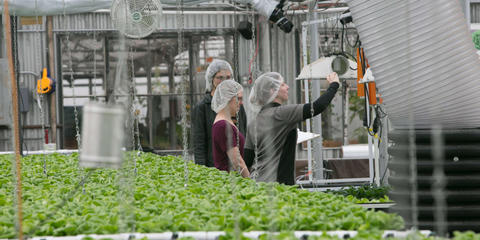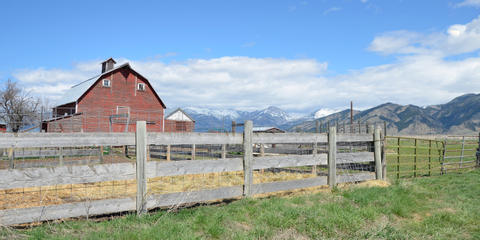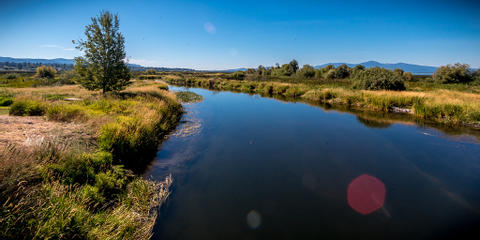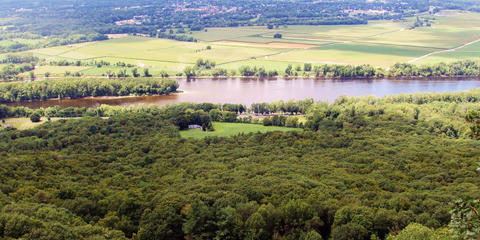Federal funding programs are under review as of 1/27/25. We'll make updates as new info is released.
The traditional Farmland Preservation Program (FPP) is the primary preservation program administered by the Connecticut Department of Agriculture. Typically it is a good fit for preserving larger (>30 acres) farms that have a significant quantity of cropland and prime and important soils as defined by the United State Department of Agriculture.
Eligibility
Applications to the Connecticut Farmland Preservation Program are submitted voluntarily by property owners and may be considered by the Commissioner of Agriculture following an evaluation based on objective scoring criteria. The criteria utilized to score applications include:
-
Acres of cropland
-
Crop yields per acre
-
Quantity of land classified as having prime and important farmland soils
-
Percentage of cropland that contains prime and important farmland soils
-
Methods of marketing commodities produced on the farm
-
Amount of other active farmland located in proximity to the farm
-
Agricultural support services available in proximity to the farm
-
Protection of the farm must be consistent with the State Conservation and Development Policies Plan for the State Of Connecticut
-
Intensive development near the farm and an excessive cost of development rights acquisition negatively affect the score, and
-
For protection projects involving USDA Agricultural Land Easement funds, farms may not have more than 67% non-cropland and must have at least 50% prime or important soils.
Terms
How the Program Works
-
Landowners may apply to the program voluntarily.
-
The application is evaluated according to state regulation criteria. If the farm meets minimum scoring criteria, the Commissioner may accept the application.
-
Configuration of the application and specifics of the easement are negotiated and agreed to by the land owner and Commissioner of Agriculture.
-
The farm is appraised for the unrestricted market value and the market agricultural value, the difference between the two indicating the value of the development rights.
-
The appraisals are reviewed by the Commissioner who may negotiate anywhere from a gift of, to the full value of the development rights.
-
An agreement letter is presented from the Commissioner to the land owner representing the agreed upon price. The letter is reviewed and approved by the Attorney General.
-
A detailed report is submitted to the State Properties Review Board for review and approval.
-
A notice of application is filed with the town clerk of the town where the farm is located.
-
Funds are acquired for the acquisition, and an A-2 survey, title insurance, and title search are obtained.
-
Upon completion of due diligence, the conveyance of development rights deed is executed and a check for the development rights acquisition processed. After all the documents are approved by the Attorney General, a closing is held and the documents and maps are recorded in the local land records and with the Secretary of State.
-
Department of Agriculture staff on an annual basis will reach out to the land owners to conduct stewardship reports and visits.
Application Instructions
Fill out the application below and submit to:
Farmland Preservation Program
Connecticut Department of Agriculture
450 Columbus Blvd., Suite 703,
Hartford, CT
06103
Resources
Related Programs

ACRE3 Agricultural Energy Efficiency
Colorado Department of Agriculture
- Grant
- Cost Share
- Loan
- Alternative Energy
- Conservation
- Irrigation
- Storage
- Greenhouse
- CO
- Any

ACRE3 Irrigation Hydropower Programs
Colorado Department of Agriculture
- Grant
- Cost Share
- Loan
- Hydro Power
- Alternative Energy
- Irrigation
- Conservation
- Water Management
- Equipment
- CO
- Any

Agricultural Conservation Easement Program: Agricultural Land Easements (ACEP-ALE)
Natural Resources Conservation Service
- Easement
- Cost Share
- Conservation
- Waterway Protection
- Water Quality
- Wildlife & Pollinator Habitat
- Education
- Recreation
- Wetland Conservation
- National
- Any

Agricultural Conservation Easement Program: Wetland Reserve Easements
Natural Resources Conservation Service
- Easement
- Cost Share
- Conservation
- Waterway Protection
- Water Quality
- Wildlife & Pollinator Habitat
- Education
- Recreation
- Wetland Conservation
- National
- Any
Details
Organization
Financial Instrument
Easement
Updated May 6, 2025
Image Credit: Lisa Careau
This information was gathered from public sources. Ambrook is not responsible for or able to affect the results of any financial programs listed, nor are they responsible for any incorrect information that is listed or is on the hyperlinked external sites. All information is subject to change.
Explore hundreds more programs on Ambrook.
